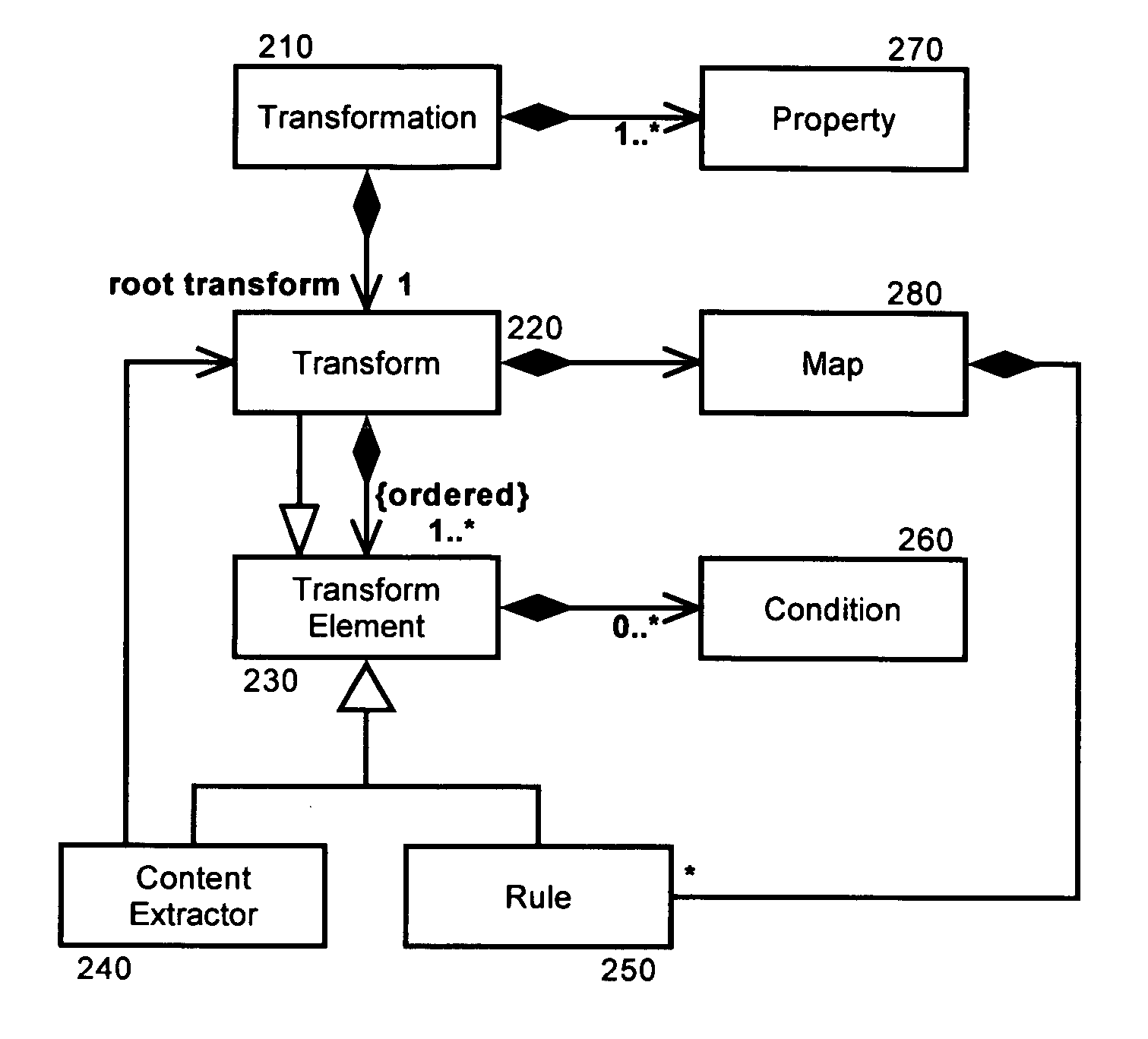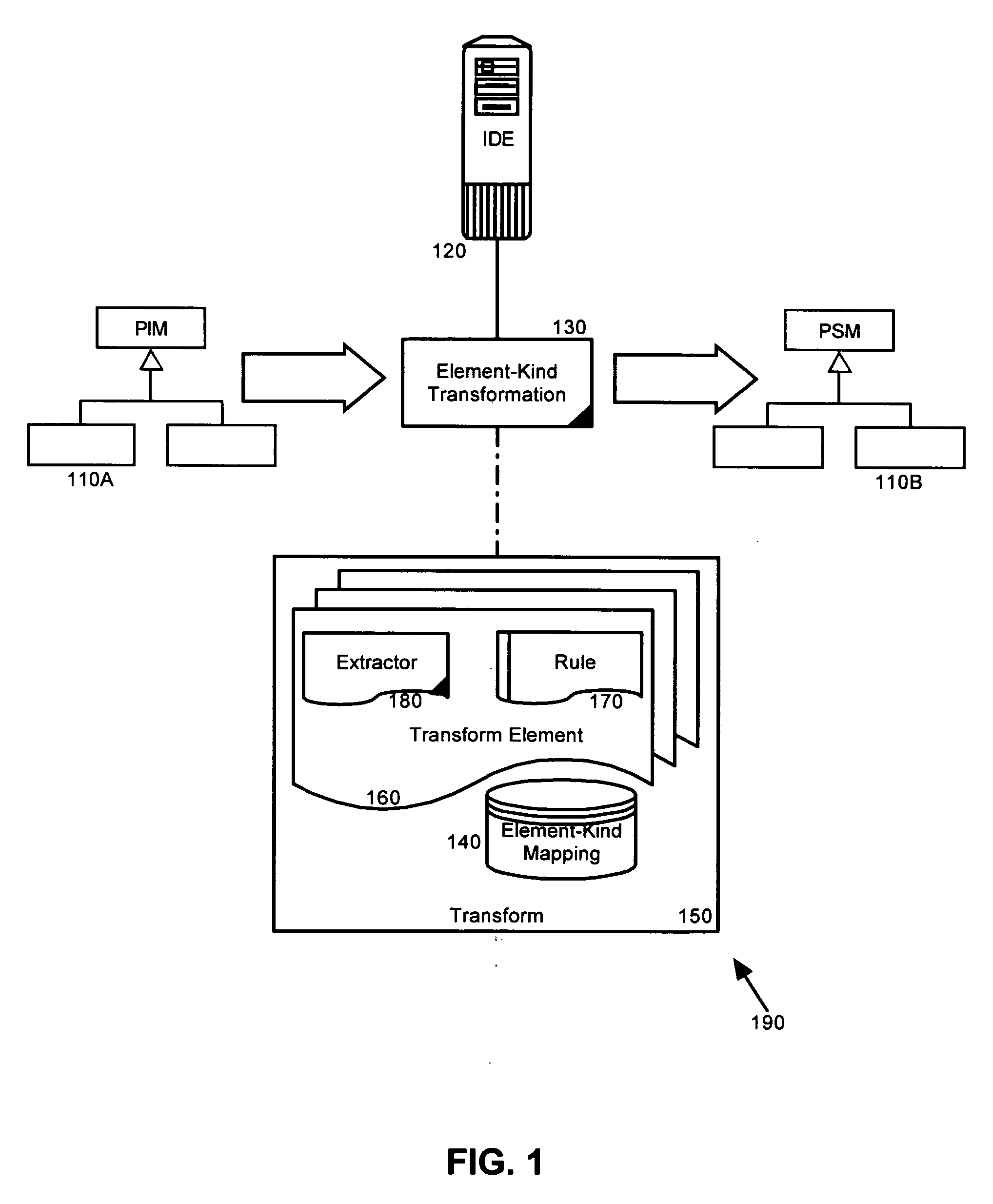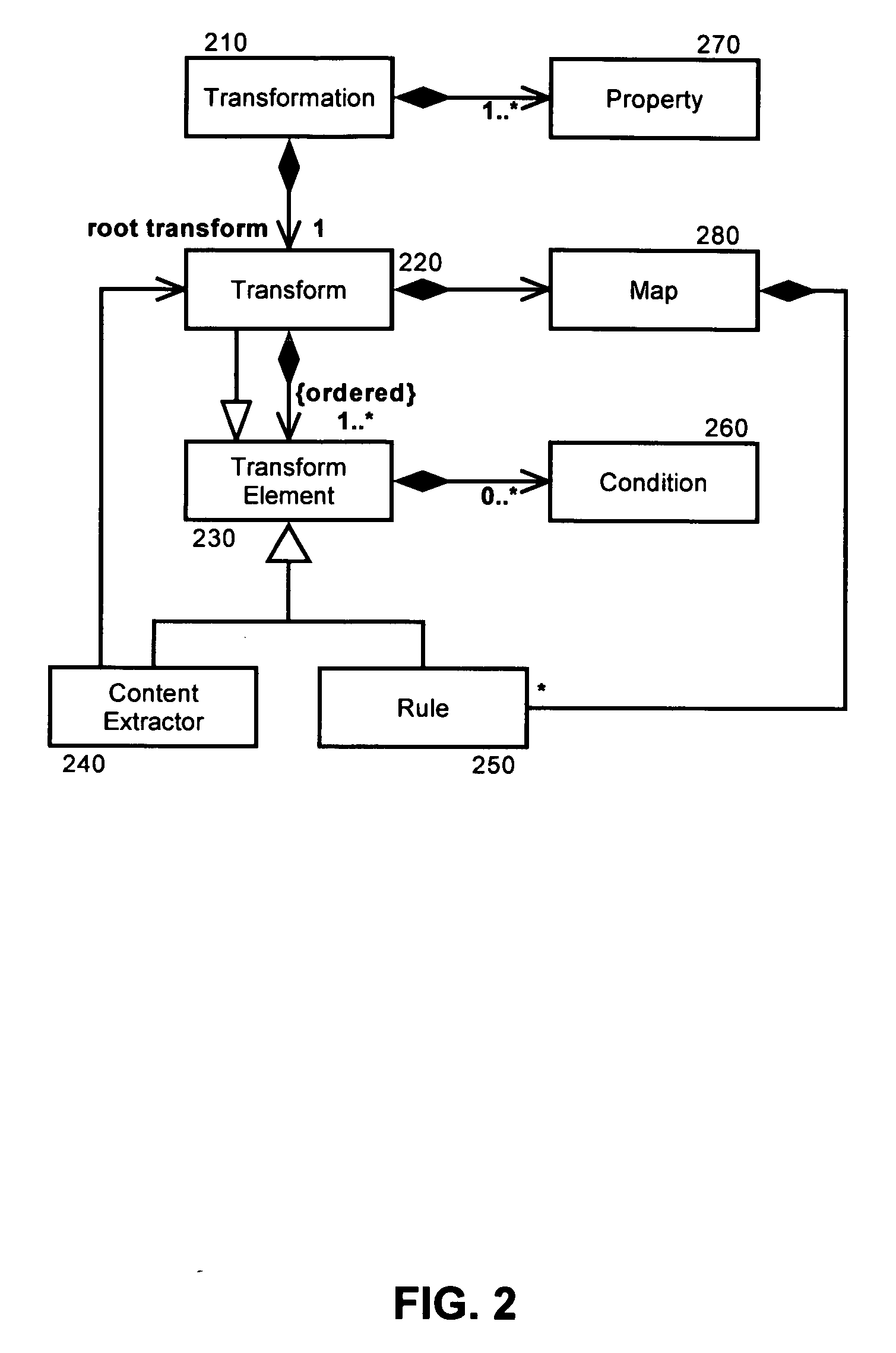Model-to-model transformation by kind
- Summary
- Abstract
- Description
- Claims
- Application Information
AI Technical Summary
Benefits of technology
Problems solved by technology
Method used
Image
Examples
Embodiment Construction
[0019] The present invention is a method, system and apparatus for transformation by element-kind in a model-to-model transformation. In accordance with the present invention, a mapping of element-kinds to transformation rules can be established in association with a model-to-model transformation. Each element-kind can be a model construct specific to the model, for instance UML. The mapping can pre-specify the transformation logic to be applied when encountering a corresponding element-kind in the source model hierarchy. In this way, even the most complex model hierarchies can be traversed and transformed efficiently without requiring a complex set of transform elements ordered to properly traverse the source model hierarchy.
[0020] In further illustration, FIG. 1 is a schematic illustration of a model-to-model transformation system configured for transformation by element-kind. The system can include a development environment 120 coupled to element-kind transformation logic 130. T...
PUM
 Login to View More
Login to View More Abstract
Description
Claims
Application Information
 Login to View More
Login to View More - R&D
- Intellectual Property
- Life Sciences
- Materials
- Tech Scout
- Unparalleled Data Quality
- Higher Quality Content
- 60% Fewer Hallucinations
Browse by: Latest US Patents, China's latest patents, Technical Efficacy Thesaurus, Application Domain, Technology Topic, Popular Technical Reports.
© 2025 PatSnap. All rights reserved.Legal|Privacy policy|Modern Slavery Act Transparency Statement|Sitemap|About US| Contact US: help@patsnap.com



